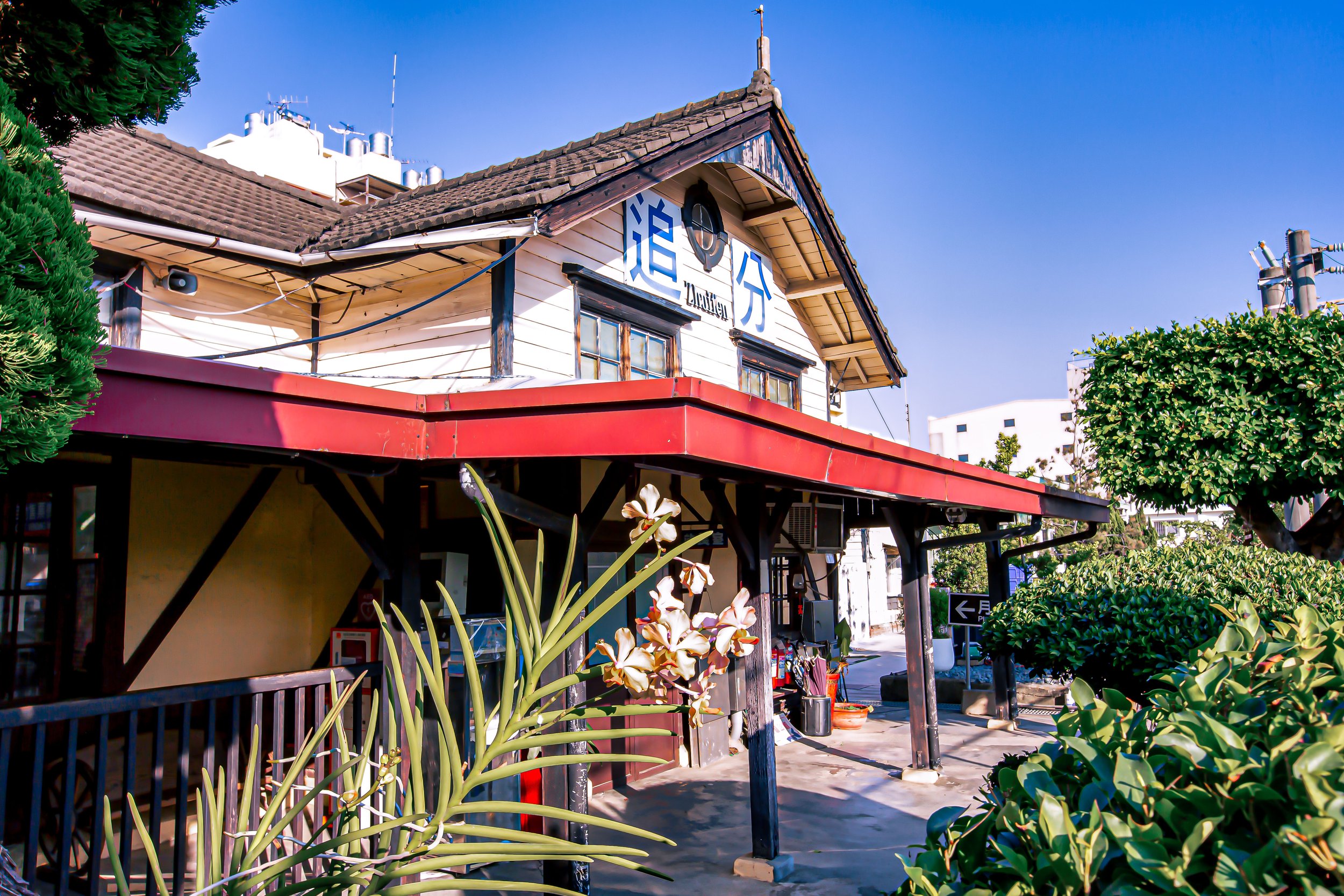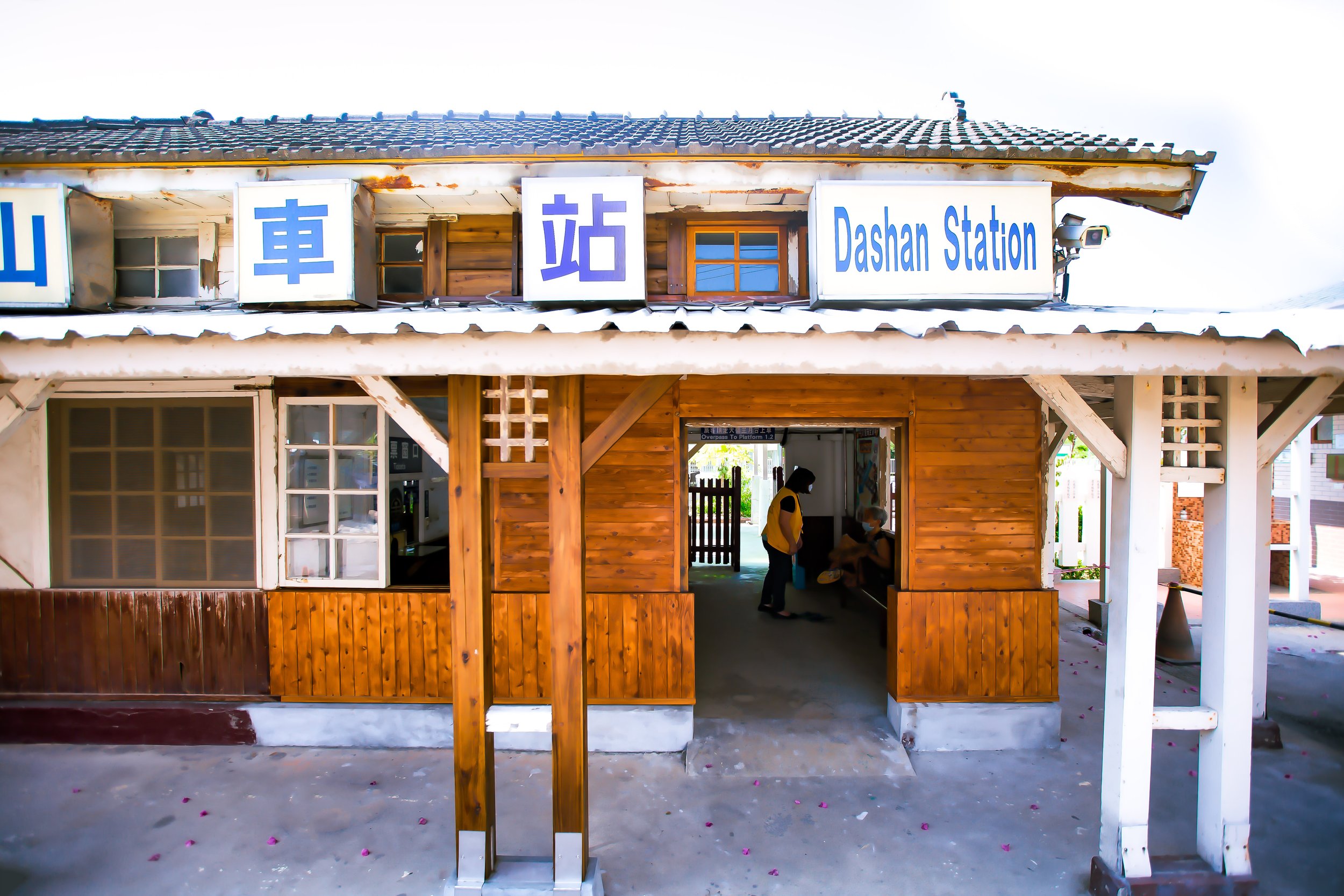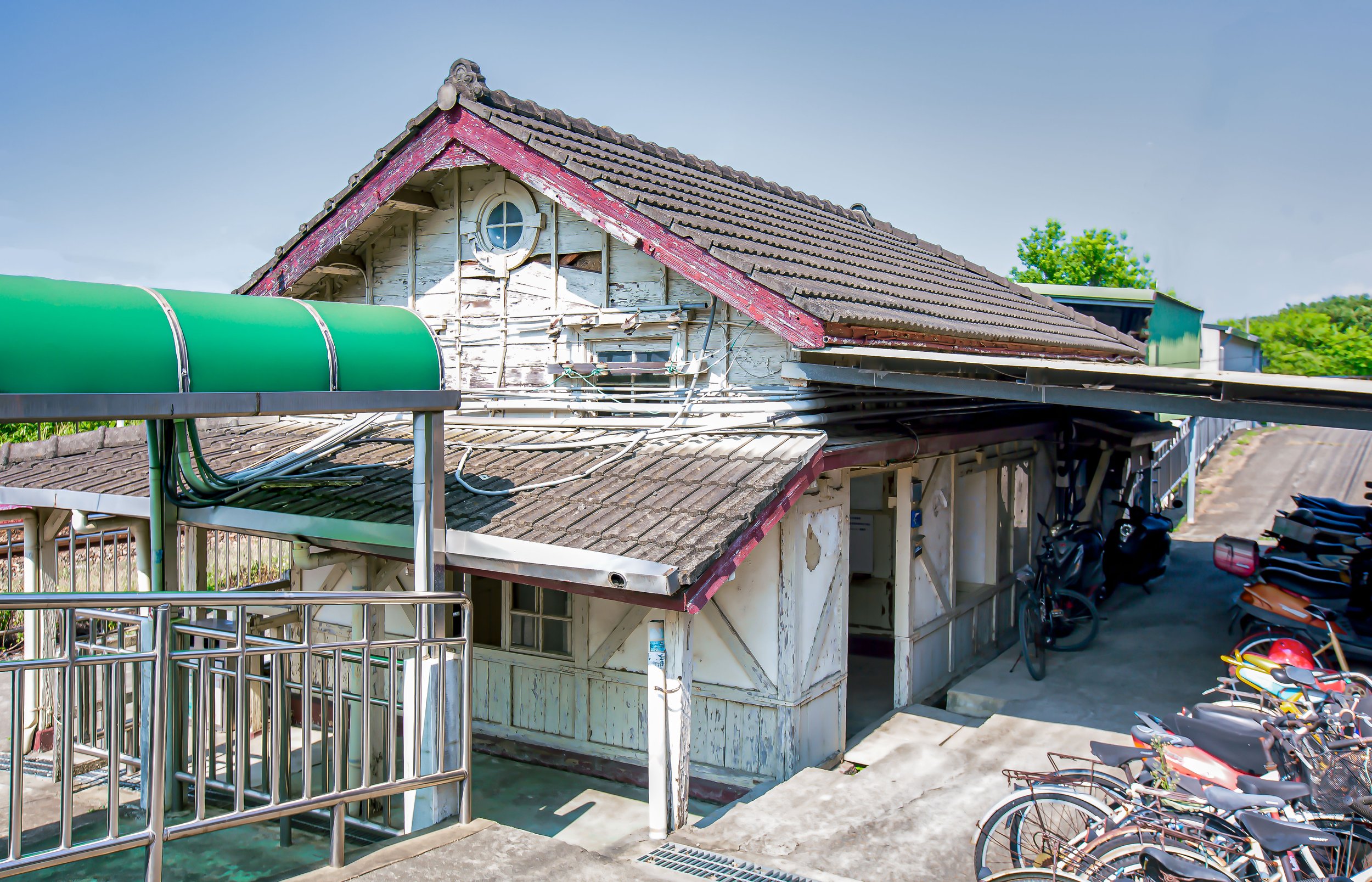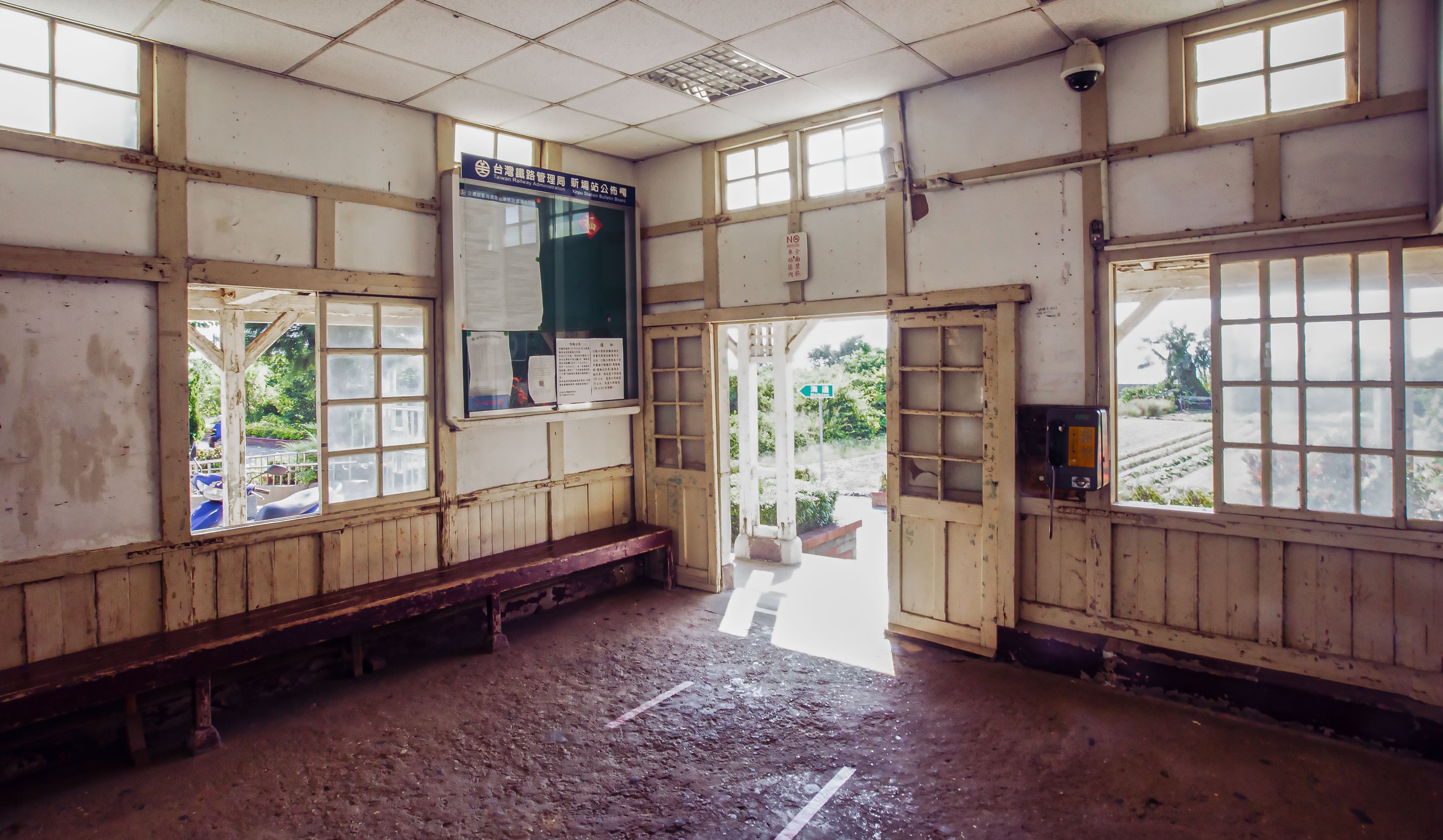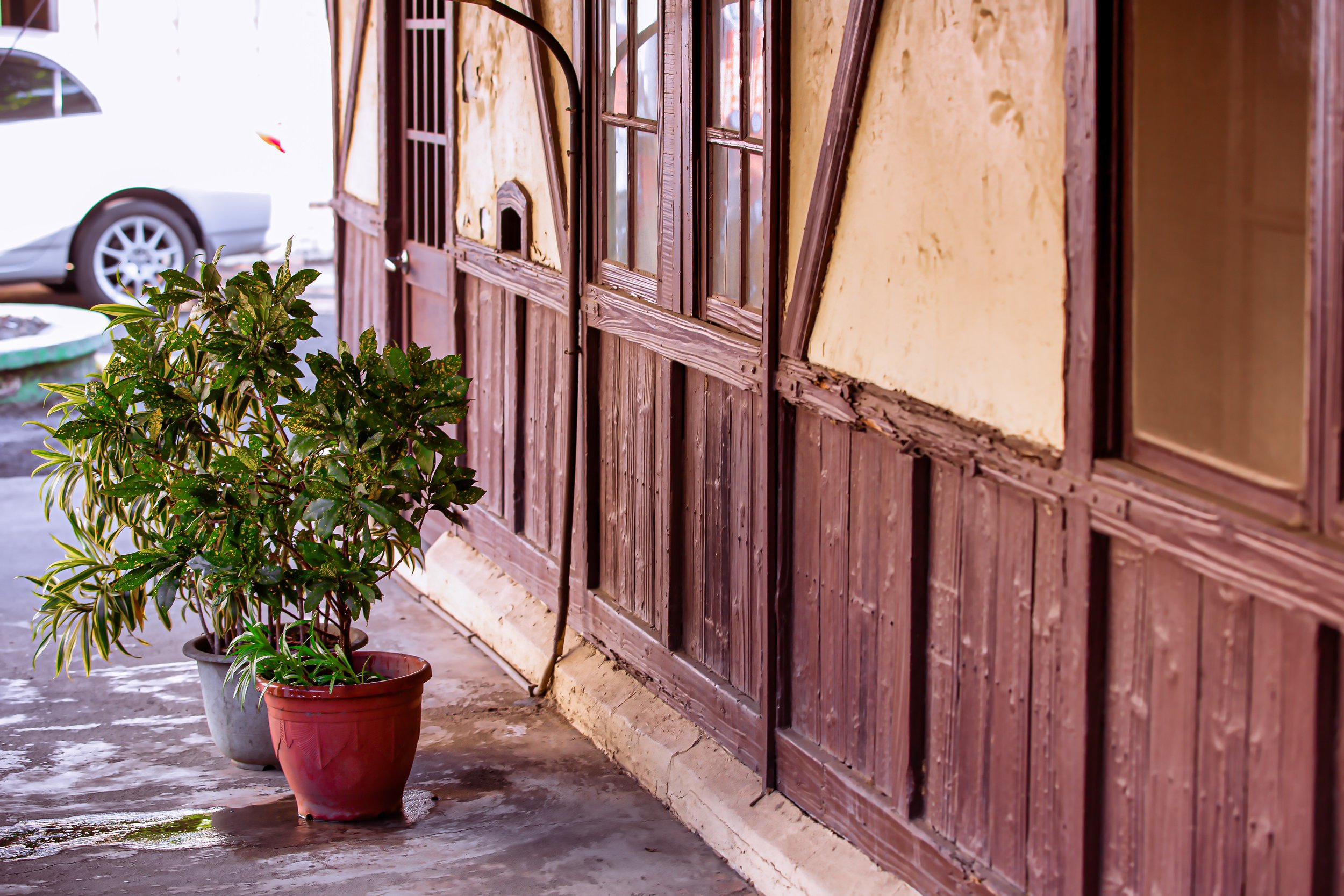The plan was quite simple, we were going to hop on a short two hour flight to the southern Japanese city of Fukuoka to enjoy some sakura, eat at some of the city’s famed ramen joints, and take a bit of a road trip.
We started planning for the trip a few months in advance, and I loaded up a customized travel map with quite a few tourist destinations, places to eat, and things to see, so when the time came, we were ready to go!
Obviously, being that it was my first trip to Kyushu, I put some of the obvious destinations on my list of places to visit. Most notably, I added the city’s most important Shinto Shrines and Buddhist temples in addition to the best places to check out the cherry blossoms.
That being said, when I travel, I enjoy checking out things that tend to not show up on the average tourist’s itinerary, and when it comes to Japan, I especially enjoy checking out things that have historic links to Taiwan.
If you’ve been following my writing for any period of time, you’re likely aware that I’ve become a bit of a fan of Taiwan’s historic railway stations, most of which were constructed by the Japanese, during their fifty years of colonial rule on the island.
The development of the railway network here in Taiwan is a story that follows closely with the development of the railway in Japan, as the empire was in mass-development mode in the early 20th century, and the railway on the southern island of Kyushu is one that was developed at the same time as Taiwan’s, with engineers constantly traveling back and forth.
Being that I’m a fan of these things, I decided to add Fukuoka’s somewhat obscure ‘Railway Shrine’ to my list of places to visit while in the city. The shrine, which was an addition to the newly constructed ‘JR Hakata City’ railway station is only about a decade old, so it doesn’t really compare to some of the other places of worship in the city that boast over a thousand years of history, but what it does do is celebrate the history of Fukuoka’s modern development, and the close relationship that the railway has played in crafting the beautiful port town.
Given that I enjoy exploring obscure locations, I unfortunately discovered upon my return home that the shrine, being as ‘new’ as it is, hasn’t really received much attention from tourists, or even domestic writers in Japan.
It ended up taking me quite a while to complete my research about the shrine before I was able to write this article - So, here’s to hoping that the effort I made to tell the story of the shrine helps to attract more visitors!
Hakata Railway Station (博多驛 / はかたえき)
Hakata Railway Station is Kyushu’s largest and busiest transportation hub, connecting the southern island to the rest of the country, and acts as the gateway to the other major cities on the island. Connected to JR West, JR Kyushu, the Kyushu Shinkansen, the San’yo Shinkansen, and the Fukuoka City Subway, the railway station serves well-over a hundred thousand commuters on a daily basis, making it one of the busiest in Japan.
Reconstructed in 2011, the station became part of the much larger JR Hakata City Building (JR博多城), which features not only all of Fukuoka’s major transportation links, but ten floors of department stores, restaurants and quick access to all of the best souvenirs in town.
And for people who love eating ramen as I do, the station is also home to an entire floor dedicated to eating some at some of the best ramen restaurants that Hakata is famous for - and lets face it, if you’re in Fukuoka, and you don’t try at least one bowl of their famed Tonkotsu Ramen (豚骨ラーメン), you’re either a vegetarian, or you completely messed up.
Note: Talking about ‘Hakata’, I think I should take a minute to explain a bit about the names here, which might confuse some travelers - A lot of people may wonder why the main station is named ‘Hakata Station’ and not ‘Fukuoka Station’. The reason for this is seeped in the history of the city, which only became known as “Fukuoka City” (福岡市) in 1889, the same year the original station opened. Prior to that, the city we know today was divided between the samurai-governed district of ‘Fukuoka’, and the port and merchant area of ‘Hakata’ (博多).
During the merger process, there was a debate as to whether the name the city should be Fukuoka or Hakata, but that debate was ended when a bunch of samurai appeared at the meeting with swords in hand and insisted upon Fukuoka.
Nevertheless, given that the railway station is located within the historic area of Hakata, it retained its original name. Similarly, we refer to ramen as ‘Hakata’ ramen, because it was where Tonkotsu noodles originated, although I’m not sure the samurai were as worried about that as they were the name of the city!
The Hakata Station that we know today, however, is one that has had to expand several times throughout its history, in order to meet the needs of the local population, and the modernization of Japan’s railway services.
The first iteration of the station opened in 1889 (明治22年) as the first thirty-five kilometer line opened for operation between Hakata Station and Chitosegawa Station. Over the next decade, the railway in Kyushu would expand to over 712.6 kilometers of track.
Note: For reference, the railway network in Kyushu currently has a length of 2,273 kilometers.
As part of Japan’s drive for modernization, the government invited a number of western engineers from America, England, Germany, etc. to come and assist in the planning of the nation’s railway, as well as training a generation of engineers, who would in turn completely transform and connect the islands in a way that had never been done before.
In its original location (about 600 meters from its current location), the first generation station was constructed in 1899 (明治22年), but as the railway grew, the original building was expanded in 1909 (明治42年). Then, in 1963 (昭和38年), a new station was constructed, in its current location, that for a number of logistical purposes made more sense.
The new station, known as the ‘Showa-era station’ was a modern skyscraper that was constructed to prepare for the arrival of Shinkansen service in Kyushu, which officially started in 1975 (昭和50年). However, as the railway network in Kyushu continued to expand, construction on the Fukuoka Subway system would eventually connect directly to the railway station in the early 1980s, offering even more convenience.
Finally, in anticipation of the completion of the Kyushu Shinkansen network, in 2005 (平成17年), a large-scale expansion project got underway, which saw the demolition of the Showa-era building and the opening of the massive Heisei-era JR Hakata City Building in 2011 (平成23年).
Amazingly, despite all of the convenience offered by the Hakata Railway Station, work continues to improve the commuting experience, and during my time in the city, they were preparing for the official opening of the Fukuoka City Subway Nanakuma Line (七隈線 / ななくません) connecting the western district of the city directly with Hakata Station, and there are further plans to extend the line further in the coming years.
For most westerners, it might be difficult to relate to the cultural importance that the people of Japan have with the railway, but the history of the railway from the late nineteenth century until now has been a story that has coincided with the modern development of Japan, and each and every person in the country has some sort of relationship with the railway.
As part of that special relationship, when the JR Hakata City building was constructed, a little extra effort was made to construct a Railway Shrine on the roof of the building, which plays an role in celebrating the history of Kyushu’s railway network, and allows for people to pray for safe travels at the same time!
Tetsudo Shrine (鐵道神社 / てつどうじんじゃ)
On October 14th, 1872, Emperor Meiji (明治皇帝) stepped onto a train at Shimbashi (新橋駅), in the newly established imperial capital of Tokyo for its maiden voyage. In doing so, the emperor ushered in an era of unprecedented and transformative era of rapid industrialization and development that still can be felt over one hundred and fifty years later in modern Japan.
Amazingly, over the past century and a half, the growth of Japan’s railway network has never stopped, with a healthy mixture of local trains, high speed trains, light rail, and subway networks spread over 30,000 kilometers of track around the country, making commutes a smooth and convenient affair.
Despite that, unlike other countries around the world that have ignored their railway networks, the Japanese are constantly looking for new methods to improve their railways, overseeing a transition from steam, to electric to a future with maglev technology. Technology, however, is not the only thing that has changed over all these years as the railway network has also had a major impact on the people of the country in which the railway acts a microcosm for the ‘efficiency’ and ‘punctuality’ that Japan is known for.
Link: Empire of steel: Where Japan’s railways stand after 150 years of evolution (Japan Times)
When visiting one of the nation’s nearly 100,000 Shinto Shrines, one of the best ways to support the shrine is to purchase an amulet known as an omamori (御守/お守り). These amulets typically feature the name of the shrine on one side, and a general blessing on the other. In most cases these blessings are for good luck, prosperity in business and success on tests, but a lot of the time you’ll find people purchasing them for ‘traffic safety’ (交通安全) protection.
With this in mind, it should be no surprise that there are dozens of ‘Railway Shinto Shrines’, known as ‘Tetsudo Jinja’ (鐵道神社 / てつどうじんじゃ) in many of the country’s major travel hubs. As highlighted earlier, Japan’s railway network is renowned for its efficiency and safety record, so one could argue that the popularity of these traffic safety amulets and shrines have done an admirable job in helping avert major disasters over the years.
Link: 鉄道神社 (Wiki)
In some cases though, a ‘Railway Shrine’ might transcend the traditional spiritual function of a shrine and play a dual-role in the celebration of the railway’s history, and its cultural importance.
The Hakata Railway Station’s Railway Shrine is certainly one of those shrines that plays a dual role in that it acts as a fitting celebration of Kyushu’s railway, and those responsible for bringing it into existence.
Unfortunately, as I mentioned earlier, searching for information about this shrine proved to be quite difficult as there is very little written about its history. Even more frustrating is that the few resources I was able to find were also unclear as to the age of the shrine. This left me wondering if the shrine existed prior to the construction of the latest iteration of the railway station, and it was moved to its current location, or it was just an addition to the newly constructed station.
Located on the roof of JR Hakata City, Fukuoka’s railway hub, the shrine is currently just over a decade old, and is a notable addition to the railway station, in that it offers travelers an opportunity to pray for safety, celebrate the history of the railway, and one of Fukuoka’s most important shrines, the Sumiyoshi Shrine, which shares its divinity with this one.
Architecturally similar to one of the smaller shrines you’d typically find nestled along the side of a road in Japan, this one features most of what you’d expect from a shrine of its size, and although you won’t find dedicated staff there that often, it is well-maintained, and an interesting tourist attraction.
As I move on below, I’ll introduce each of the important pieces of the shrine to help readers better understand what they’ll see if they visit:
The Visiting Path (參道 / さんどう)
The Visiting Path, known in Japanese as the “sando” (さんどう) is an essential aspect of the overall design of any Shinto Shrine, and is most often just a long pathway that leads visitors to the shrine. While these paths serve a functional purpose, they are also quite symbolic in that the “road” is the path that one takes on the road to spiritual purification. Taking into consideration that ‘Shinto’ is literally translated as the “Pathway to the Gods” (神道), having a physical pathway that leads people from the realm of the profane to that of the sacred is quite important.
The length of a shrine’s visiting path tends to vary, based on the size of the shrine, and where it’s located. Shrines in the forest, or on the sides of mountains, for example tend to have quite long Visiting Paths, while those located in cities are much shorter. Keeping in mind that this specific shrine is located on the roof of the train station, the amount of space available for the path is obviously confined, especially since it shares the space.
One of the noticeable differences between this Visiting Path and others is the absence of the stone Guardian Lion-Dogs, known in Japan as ‘komainu’ (狛犬/こまいぬ) as well as the stone lanterns, known as as ‘toro’ (しゃむしょ), which are usually lined symmetrically on both sides of the path.
The Shrine Gates (鳥居 / とりい)
Shrine Gates, known in Japanese as ‘torii’ (鳥居 / とりい) are some of the most iconic images of Japan, and while they are quite beautiful, they are also extremely symbolic at the same time. The gates, which line the ‘Visiting Path’ of any shrine are essentially markers along the road that symbolize the transition from the mundane to the sacred.
These gates are one of the best methods for identifying that a shrine is nearby, and also one of the best ways for a foreigner to differentiate a shrine from a Buddhist temple. Depending on the amount of space reserved for a shrine, there might only be one gate, or there could be several - In this case, there are four primary gates along the Visiting Path, but there are also a number of decorative gates that surround both the left and right paths that encircle the shrine.
In most cases, when there are a number of shrine gates, they are numbered, for example, the first gate is known as ichi no torii (一の鳥居), the second, ni no torii (二の鳥居) and so on. In this case though, each of the primary gates features a name, which sets them apart from most other shrines in the country.
I’ve translated the names of each of the gates below:
Heavenly Gate (一の鳥居には / 星門)
Prosperity Gate (二の鳥居は / 福門)
Dream Gate (三の鳥居は / 夢門)
Main Gate (本鳥居 / 鐵道神社)
One of the most fortunate aspects of my visit to the shrine was that I was able to visit at a time when all of the cherry trees that were planted near the shrine were in bloom. Together with the shrine gates, the cherry blossoms made the experience a special one, especially since it was a bit windy on the roof and some of the blossoms were falling like snow in the afternoon rain.
The Purification Fountain (手水舍 / ちょうずしゃ)
Located to the right of the third shrine gate, or the 'dream gate,’ you’ll find a small, and very simple Purification Fountain, which is an essential addition to any Shinto Shrine as one of the most important aspects to Shintoism is something referred to as “hare and ke” (ハレとケ), otherwise known as the "sacred-profane dichotomy."
It is thought that once you pass through the shrine gate, which is considered the barrier between the ‘profane’ and the ‘sacred’, it is necessary to do so in the cleanliest possible manner by symbolically purifying yourself at the chozuya (ちょうずしゃ) or temizuya (てみずしゃ) provided.
An absolute must at every Shinto Shrine, the purification fountain is an important tool for symbolically readying yourself for entrance into the sacred realm. To do so, worshipers take part in a symbolic ritual that it’s safe to say that every person in Japan is familiar with.
Link: How to Perform the “Temizu” Ritual (Youtube)
Jizō Shrine (和顔施合掌地蔵)
Located along the Visiting Path, you’ll find a small little wooden shrine house with a statue of Jizo (地蔵 / じぞうそん), one of Japan’s most well-loved Buddhist figures. At one time, Shinto Shrines and Buddhist Temples were once synonymous with each other, but during the Meiji Revolution, the Emperor insisted that they become separate as there was a push to make Shinto the state religion. Despite this, you can still find images of Jizo hanging out close to Shinto Shrines in Japan, and given that this shrine in particular is geared towards travelers safety, it shouldn’t be a surprise that he makes an appearance here - especially since he is regarded as a guardian deities for children and travelers.
Main Hall (本殿 / ほんでん)
The ‘Main Hall’, otherwise known as the “honden” (本殿/ほんでん) is regarded as the most sacred part of any Shinto Shrine, and is the home of the gods. As a smaller shrine, the Main Hall at the Tetsudo Shrine is a simple ‘hokora’ (祠 / ほこら) style structure that is elevated on a stone base.
A hokora is essentially a miniature version of a much larger shrine, and shares similar architectural designs, albeit on a much smaller scale.
Today the term ‘hokora’ pretty much translates as ‘shrine’, which for someone like me who lives in Taiwan will understand as a ‘place of worship’ that is considerably smaller than a temple. It’s thought that the Japanese term however evolved from the similarly sounding word ‘hokura’ (神庫), which translates literally as "kami repository”, or home of the gods.
In any case, the miniature structure here was constructed primarily of wood, and features a copper roof. Following one of the most common architectural designs for Japan’s Shinto Shrines, it makes use of the ‘nagare-zukuri’ (流造 / ながれづくり) style.
In this style of design, the ‘moya’ (母屋 / もや) is surrounded by a veranda on all four sides and has a set of stairs in the middle with two columns on either side. The columns help to support an asymmetrical ‘kirizuma-yane’ (切妻屋根 / きりづまやね) gabled roof that eclipses the size of the ‘moya’ and the veranda that surrounds it, keeping the wooden section dry.
As most often is the case, the hokora acts as a ‘repository’ for the kami enshrined within, which is a sacred space that normal people aren’t really supposed to approach. In this case, the shrine is quite small and you won’t often find shrine staff in the area, so you can approach it quite easily. That being said, the doors to the shrine where the kami are located is usually closed, so it doesn’t matter all that much anyway.
Sumiyoshi Sanjin (住吉三神)
The kami enshrined within the Railway Shrine are known as the Sumiyoshi Sanjin (住吉三神), and their divinity was ‘shared’ from the nearby Sumiyoshi Shrine (住吉神社 / すみよしじんじゃ), one of Hakata’s oldest and most important places of worship.
For those of you unfamiliar with how Shinto Shrines partition, or ‘divide’ a kami’s power, I recommend checking out the explanations linked below. The process from which larger shrines share divinity with smaller shrines is something that is common in Shinto Shrines in Japan, but is also a practice that you’ll find throughout other places of worship in Asia.
The three Sumiyoshi Sanjin, also known as the Sumiyoshi daijin (住吉大神) are as follows:
Sokotsutsu (底筒男命 / そこつつのおのみこと)
Nakatsutsu (中筒男命 / なかつつのおのみこと)
Uwatsutsu (表筒男命 /うわつつのおのみこと)
Regarded as the gods of the sea and sailing, the Sumiyoshi Sanjin were carefully chosen in that not only do they reflect the Hakata’s long history as one of Kyushu’s most important international trading ports, but because they are known for their ability to protect travelers, which is obviously quite important for a railway shrine. Likewise, with well over two-thousand shrines across the country dedicated to these deities, the nearby shrine mentioned above is (probably) one of the first dedicated in their honor, and is one of the three-most important in the country.
Link: Sumiyoshi sanjin (Wiki)
Hermann Rumschöttel Memorial (ヘルマンさんのレリーフ)
Located to the left of the Main Hall, you’ll find a memorial dedicated to German engineer Herrmann Rumschottel (1844-1918), who starting in 1887 was responsible for overseeing the construction of Kyushu’s rail network, and the training of Japanese engineers who would ultimately complete the work years later.
The simply memorial features a carved likeness of Rumschöttel with the text “九州鉄道建設の恩人”, which translates as the ‘Benefactor of Kyushu’s railway,’ a nod to his influence.
Getting There
Address: 1-1 Hakataekichūōgai, Hakata-ku, Fukuoka, 812-0012 (〒812-0012 福岡県福岡市博多区博多駅中央街1−1)
GPS: 33.589780, 130.417820
Mapcode: 724 404 559*62
When it comes to offering directions to the locations I write about, I usually have to spend a bunch of time providing detailed travel information so that people don’t get lost. With this one, I fortunately don’t have to spend very much time with this section.
The Hakata Railway Shrine is conveniently located on the roof of the Hakata Railway Station (博多駅 / はかたえき). The station is accessible via JR Kyushu, JR West, and the Fukuoka City Subway. As a major transportation hub in Kyushu, it is accessible by not only local and express trains, but also the Shinkansen (新幹線) as well.
Links: Hakata Station | 博多駅 (Wiki) | Fukuoka City Subway
Understandably, as Kyushu’s largest transportation hub, the railway station is quite, and a maze of corridors, which makes it confusing for a lot of tourists. So, to get to the roof, you’re going to have to make your way to the eastern side of the building, where you’ll find the Hankyu Department Store on one side, and Tokyu Hands on the other.
From there, you’ll probably notice the large glass elevators that are buzzing up and down the building. To save a lot of time, its better to get on the elevators and take them to the top floor. Once you reach there, you’ll simply take an escalator to the roof and you’ll find the shrine in no time.
While you’re on the roof, it’s important to note that it’s not only home to the shrine, but some romantic skyline views of the city and some attractions that are especially attractive for children. It tends to be a busy place, but the shrine tends to be quiet most of the time.
If you find yourself in Fukuoka for any length of time, there are quite a few thousand-or-more year old shrines to visit, so this one likely isn’t at the top of most people’s list of destinations. As I mentioned earlier, I was a little more invested in a visit to the shrine than most tourists due to the history of the railway in Japan, and how it relates quite closely to the development of the railway here in Taiwan.
We don’t have any Railway Shrines over here anymore, but it was nice to see the history of Japan’s railway celebrated in this way on top of one of the busiest transportation hubs in southern Japan.
References
Hakata Station | 博多車站 | 博多駅 (Wiki)
鉄道神社 福岡市 (Wiki)
住吉三神 (日文) | 住吉三神 (中文) | Sumiyoshi sanjin | (Wiki)
船や鉄道、バイクまで さまざまな「乗りもの神社」全国に (Traffic News)
鉄道神社(てつどうじんじゃ)- 福岡市 (福岡のかみさま)
鉄道神社の御朱印情報~博多駅に最も近い神社~ (御朱印のじかん)
鉄道神社 (旅人のブログ)
There’s a shrine and strange scene waiting for you at the top of this Japanese train station (Sora News)
日本博多車站推薦景點|在博多車站就可以看夕陽跟夜景 ,還有超迷你神社 !|博多車站燕林廣場 (Pop Daily)
















